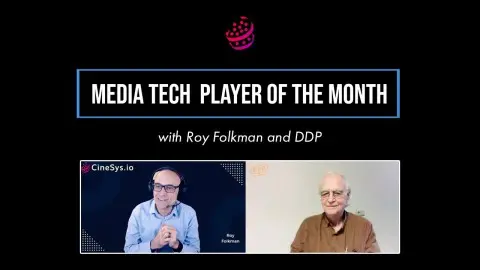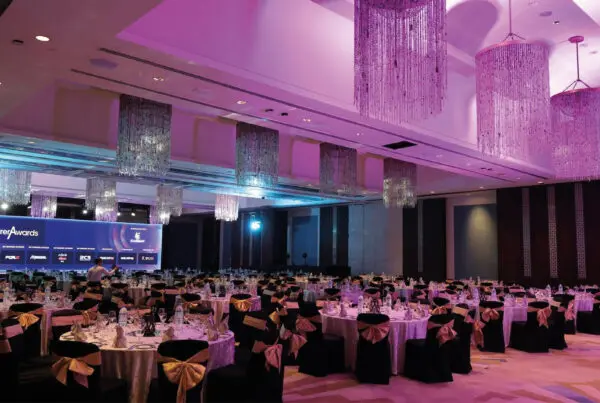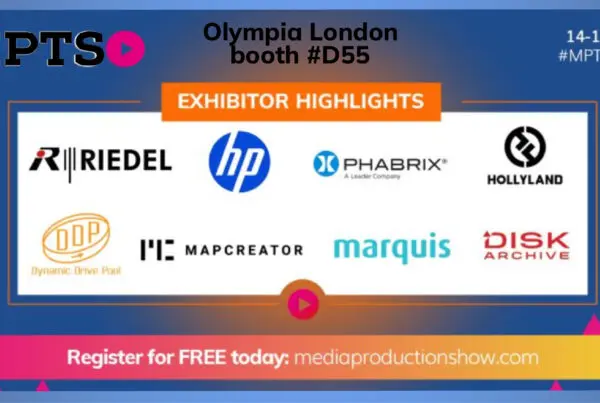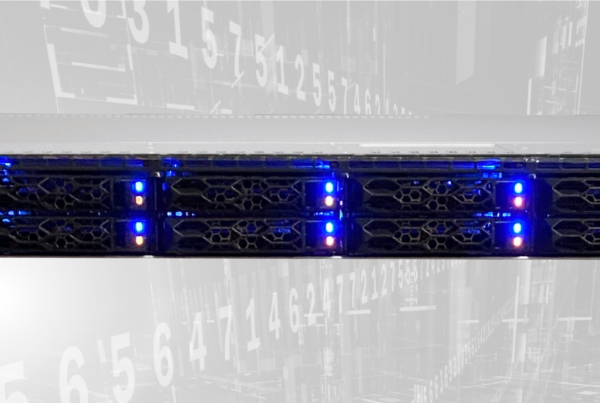In the NAB edition of our Media Tech Player of the Month, Roy Folkman from CineSys interviews CEO Jan de Wit of DDPSAN by Ardis Technologies BV
DDP is an award-winning SAN shared storage solution using Ethernet and optimized for multimedia workflows. We’ll be featuring their blazing-fast NVMe SAN DDP10EF and more at our CineSys booth SL10919 at NAB Show 2025.

AArdis Technologies is owned by Bart Thissen and Jan de Wit. We are both music lovers and musicians and our first systems were sold to audio studios using Pro Tools still then with the DAE engine. We have been doing this for more then 20 years now.
We got to know Cinesys back in 2010 when Brent was pointed to us by Univision. They were looking for a shared storage solution then for the Olympic games in South Africa I think it was. We have very long relations with our distributors, dealers and many customers globally.
The only thing we try to do is to provide the best M & E solution for the best price and have the least possible issues. And when there is an issue to solve it quickly. It is one of the reasons why we developed A/V FS.
The A/V FS SAN high availability file system evolved from what we have been doing all these years and use key-value database technology.
Because we could not find a proper file system for Media and Entertainment we decided to develop A/V FS. As a SAN file system A/V FS uses standard the iSCSI protocol in all DDP products.
In addition the DDP10EF and HA DDP solutions can use the NVME-oF/RDMA protocol.
The high availability DDP solutions yet again go one step further and can also be delivered with Fibre Channel. For low bandwidth requirements and push/pull also SMB can be used.
A/V FS is a single file system. Do not confuse this with the phrase “single or one name space” . When that phrase is used it means that there are multiple file systems underneath the one name space. There are then often limitations, which are not there with a single file system.
Project based caching, the use of hard links and native Avid MediaFiles project sharing and bin locking support are only possible within one file system. The caching mechanism in A/V FS is unique. This will be discussed in more detail answering a next question.
Another special A/V FS feature is that any folder, subfolder, sub subfolder can be given volume properties. These are then called folder volumes and can be connected as a volume on the desktop on Macs and in My Computer on Windows and on Linux.
A third feature is that access right management is folder and not file based. Exactly what is needed when working in M & E. And last but not least because A/V FS is developed in house and runs on all DDP systems any support issue can be dealt with quickly and almost immediately.
Unfortunately we need to dive a bit deeper into the technology now to explain the advantages of A/V FS. On any shared storage system you find the directory tree which shows what is on the storage.
Now let us ask the question “Can I freely copy and move files around on the storage without effecting the directory tree?”
At first sight this question sounds weird.
Normally when you do a copy or move you select files or folders and then move or copy these and it shows in the directory tree that files on the storage have been moved or copied.
However state of the art shared storage systems consist of different groups of physical storage such as hard disks, SSDs, tapes or groups of hard disks of different capacities on premises or in the cloud.
To manage such systems the file system with its directory tree is kept independent from where the file data is stored. This creates the possibility to move file data around internally between these groups without effecting the directory tree. A limitation is that in many cases during such a move at some point no one can access such file. Mind you these are internal moves so a copy without effecting the directory tree does not sound like a possibility at all. With A/V FS we have gone that extra mile and implemented an internal move and copy mechanism which can be used while operators access files as they see fit without hick up.
It is a fact that SSDs are fast and can easily handle audio, video and film, but compared to hard disks they are still much more expensive.
So it helps that A/V FS can unconditionally and transparently copy and move data internally. Copying is between groups and SSD cache.
Moving (consolidating) can be between all groups.
Now how does that benefit the customers?
We know that material in M & E is organized in projects. And obviously projects are organized using some kind of folder/subfolder structures. So to cache a project which is on the hard disks you only need to cache the content of its folder structure to the SSDs. This is exactly what the DDP allows you to do.
When opening a project caching can start. When the project is finished its files can be cleared from the cache. The clearing is instant and the files can still be accessed from the hard disks. This is because as an unique property of A/V FS the data of files and folders in the directory tree can be at two places simultaneously.
This kind of caching is not possible in other systems. Even an internal move in other systems is not straightforward.
In general a move is a copy, rename and then finally delete of the original. A file which is being read by an operator can not be deleted of course. It means that although the copy part can happen the rename and the delete must be stalled to the point that no one has access to the file or files anymore. But when would that be?
The DDP10EF is a 1U DDP base system with redundant power supplies.
It comes with dual 100 GbE/QSFP28 ports. The empty PCIE slot can be filled with an EX card or an Ethernet card.
Its SIOM port can be equipped with a dual 100Gig, dual 10/25Gig optical or dual 10GbE copper card.
The DDP10EF can be filled with an NVME SSD4 and or an NMVE SSD6 pack.
The SSDs are configured as one RAID5 set. The NVME SSD are from 0.96 to 30.72 TB.
When fully loaded and with the proper Ethernet ports read bandwidth can be 40GB/s and write bandwidth 24GB/s with 270TB usable capacity.
The DDP10EF can of course be used as a standalone system.
But since the DDP10EF uses A/V FS under the hood it can also be used as a cache when one or more hard disk storage arrays are connected.
When that is the plan an EX card must be installed in the available PCIE slot.
DDP16,24 and 78EXR storage arrays with hard disks can be connected. To be able to use a combination of NVME SSDs and hard disks integrated within a single file system A/V FS with caching is pretty unique. It gives a customer again the best of both worlds.
On Windows and Linux the DDP10EF can be accessed using iSCSI and NVME-oF/RDMA. On Mac iSCSI is used. Bandwidth on a desktop can be up to 11GB/s.
On www.ddpsan.com/Products/DDP10EF and in the documentation section reachable at the end of the page there are leaflets with further information.
NVME-oF stands for a fabric of NVME disks.
In M & E one also need data protection for an NVME fabric. For that we use a raid card from Graid.
RDMA stands for Remote Direct Memory Access. This means that over Ethernet and Infiniband a link can be established between server and desktop memory.
We use this for block IO access.
With the combination of iSCSI and NVME-oF/RDMA I think we can cover all requirements users have regarding performance for now and the years to come.
There still remains a difference. But I don’t think it is that important anymore in M & E in contrast to office database applications. With IOPS you talk about R/W of millions of small like 4kbyte files for example. With streaming kind of the opposite.
Of course the less latency the higher the IOPS but more important is the way how sharing (read/write locking) is done.
Systems optimized for IOPS use range locking to prevent unneccessary OS cache invalidations when small blocks are written. When are you telling the other users that this file has changed for example?. Those typical database applications are not common in M & E.
Audio files can be small but DDP is largely favored in this market. Video files are large so IOPS do not play a role there . Tiffs, exr, dpx are not small files either and the A/V FS metadata handling is largely optimized for these frame files.
Yes that difference certainly gets blurred. Like the DDP more and more NAS solutions also require installing a driver on the desktop. Of course there are many companies offering open source NAS solutions with XFS, ZFS, ext2/3 FS etc. under the hood. There is nothing wrong with that.
But if I were an owner of lets say a post production company with ten seats I would go for one of the hybrid DDP solutions because it give me project caching within a single file system and I would not have to worry too much about overloading the system: best of both worls so to speak. No matter how big the installation grows with DDP there is always a single file file system no matter what you add on.
With NAS you quickly come into the name space world.
I can only look at the future of M & E and the DDP in relation to that. Because that is what keeps me busy. DDP is on premise shared storage plain and simple.
If you want to have it in the cloud or use a mixed environment we are not the first to think of.
Of course a company using DDP by using Archiware for example can also backup or archive to the cloud and companies on different sites can work together by using Archiware synchronize. But regarding internet access security becomes more an issue these days.
If you want to stay away from this the best is to have a transfer room in your facility with a proper virus scanner and our Mover/Checker solution and disconnect the production computers from internet and have a DDP in your facility. And when you have doubt about some activity you can use the audit facility within the DDP.
After all if you work with sensitive material from a customer they trust you to keep it secure. If you move that to the cloud the customer will ask is it safe?
That question can never be answered with a simple yes then.
As for AI that is just beginning and eventually there will be no need to access data centers for that and you can use it on premise.
As you can see we are convinced that the DDP range of on premise products is here to stay for years to come.
For next decades there will be SSDs, then hard disks and then tape and maybe eventually DNA storage. All have advantages and disadvantages.
But since we are only doing DDP in M & E there are other people who have more knowledge about this.
No, thank you!!!!






